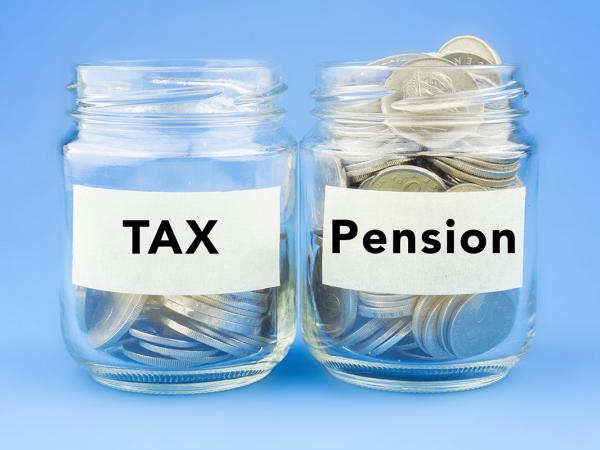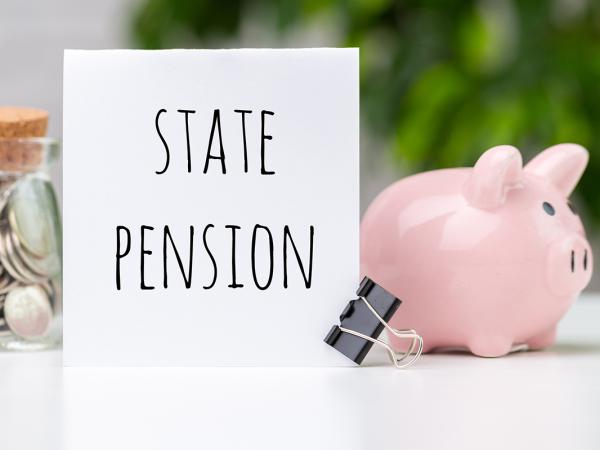How tax is collected on the state pension
The state pension is taxable. Here we look at how tax is collected on the state pension.

Content on this page:
Overview
The Department for Work and Pensions (DWP) does not operate Pay As You Earn (PAYE) on your state pension – so you receive it gross, without any tax collected at source before it is paid to you.
If the state pension is your only source of income, it might be less than your tax-free allowances. This means you do not have to pay any tax on it.
If your state pension is more than your tax-free allowances, or if you have other income sources that take your total income above your allowances, you might need to pay tax.
There are a few ways that tax might be collected on your state pension, depending on your circumstances:
- under the PAYE system, if you have a source of PAYE income (for example, a private pension or employment); or
- under the self assessment system (if you complete a tax return); or
- by HMRC issuing a simple assessment calculation after the tax year end.
We look at each of these methods in the sections that follow.
Collection of tax through PAYE
If your total taxable income, including your state pension, is greater than your tax-free allowances and reliefs, you will have to pay tax on the portion of your total income that exceeds your allowances. Check your coding notice to make sure you have been given the correct allowances and reliefs, and the amount of state pension included in your tax code is correct.
HMRC will check how much tax you have paid after the end of the tax year. If PAYE has collected too much tax, they should contact you about a refund.
Starting to receive state pension
When you approach state pension age, the DWP will contact you about claiming your state pension.
When you claim your state pension, the DWP usually notifies HM Revenue & Customs (HMRC) automatically, and provides details of your state pension award. This automatic notification should happen before you receive your first state pension payment.
If you pay tax under PAYE on another income source, HMRC will use the information from DWP to update your tax code and include an adjustment for your state pension. In the first year you get your state pension, you will likely receive payment for only part of the year. HMRC will normally include a full year's state pension in your PAYE coding notice and then tell your employer or pension payer to use a special type of code – called a week 1 or month 1 code – to make sure that you only pay the right amount of tax under PAYE.
If you don’t notice a change to your PAYE tax code after you have started to receive state pension, you should contact HMRC and check that they have received details of your state pension award from the DWP.
Collection of tax through self assessment
You will only usually pay tax on state pension income via self assessment if you are required to complete a tax return for some other reason. Having taxable state pension income alone is not normally a reason to be in self assessment. You can read more about the self assessment criteria on our page Who has to complete a tax return.
Collection of tax through simple assessment
If it is not possible for HMRC to collect the tax on your state pension through the PAYE system, and you are not otherwise required to complete a self assessment tax return, HMRC may instead send you a simple assessment calculation after the end of the tax year.
You can read more about simple assessment in our guidance.
Tax on arrears (back-payments) of state pension
The DWP is reviewing some people’s state pensions after finding out that their systems were wrong. The errors mean that the DWP have paid some people less state pension than they should have – so you may be owed a back-payment.
If you receive a back-payment, you need to know how it affects your tax.
We understand that the DWP will share information about the payments with HMRC to help you resolve any tax issues. Our information below will help you understand what should happen.
Back-payments of state pension that relate to an earlier tax year are taxable in the year you should have received them, not in the year they are actually paid.
You will only need to pay tax on the back-payments if your total income was more than your personal allowance for the relevant tax year. HMRC will only seek to collect income tax any part of the back-payment relating to the current tax year and the previous four tax years. This means that for any back-payments received in 2024/25, HMRC will not collect tax on payments that relate to tax years before 2020/21.
We understand that the DWP will tell HMRC when a back-payment has been made. HMRC will then contact you if they think you owe some tax.
We also understand that HMRC will allow you to set up a Time to Pay arrangement if need be, rather than pay any tax all at once.
Death before back-payment is made
We understand in cases where the pensioner has unfortunately died prior to the back-payment being made, that the payment will go to the individual’s personal representatives or next of kin.
HMRC have told us that the tax position will vary depending on whether or not the pensioner receives a notification from the DWP that a back-payment is due before they died:
- If both the notification of the back-payment and the payment itself are received after death, then HMRC will not collect income tax on the back payment. The payment will not be included as part of the deceased’s estate for inheritance tax purposes.
- If the pensioner has been notified by the DWP that a back-payment will be made, but the payment is not actually received until after they have passed away, income tax will still be collected by HMRC (payable by the personal representatives). The payment will form part of the deceased’s estate for inheritance tax purposes.
Deferring your state pension
When you reach state pension age, you might decide not to claim straight away. This might particularly be the case if you are still working. We discuss this more on our page Putting off (deferring) claiming the state pension. We discuss the tax implications of receiving a deferred state pension lump sum on our page Tax on deferred state pension lump sums.
During the period of state pension deferral, you do not pay any tax on your state pension, as you are not claiming or receiving it.



